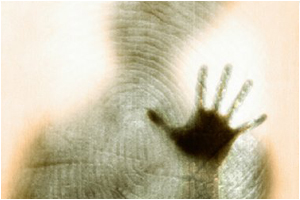

|
DEFINITION
A serial killer is someone who kills several people in three or more separate events with an "emotional cooling-off" period in between the homicides. The cooling-off period may last days, weeks, months, or even years. Many serial killers are psychopaths, considered to have a personality disorder and not psychosis, and thus appear to be quite normal and often even charming, a state of adaptation which Hervey Cleckley calls the "mask of sanity." There is sometimes — but not always — a sexual element to the murders. The murders may have been completed/attempted in a similar fashion and the victims may have had something in common, example occupation, race, sex, etc. The term serial killer is widely believed to have been coined either by FBI agent Robert Ressler or by Dr. Robert D. Keppel in the 1970s (the credit for the term is disputed). Serial killer entered the popular vernacular in large part due to the well-publicized crimes of Ted Bundy (for whom the term was first used) and David Berkowitz ("Son of Sam") in the middle years of that decade. CHARACTERISTICS OF SERIAL KILLERS
 Aside from characteristics like sociopathic personalities, uncontrollable desires, and other mental disorders, there have been suggestions as to why serial killers become serial killers. In a paper presented to the International Association of Forensic Sciences in 1984, FBI Special Agent Robert K. Ressler - author of such novels as Crime Classification Manual and Sexual Homicide: Patterns and Motives - and several of his colleagues listed the following "general characteristics" of serial sex-murderers:
In addition to the above list, there are also three more characteristics of general serial killers: TYPES OF SERIAL KILLERS
 A significant number of serial killers will show certain aspects of both organized and disorganized types, although usually the characteristics of one type will dominate. Some killers descend from being organized into disorganized behavior as their killings continue. They will carry out careful and methodical murders at the start, but as their compulsion grows out of control and utterly dominates their lives, they will become careless and impulsive. Regardless, the FBI generally categorizes serial killers into the two different types. Organized types: are usually of high intelligence, have an above average IQ (105-120 range), and plan their crimes quite methodically, usually abducting victims, killing them in one place and disposing of them in another. They will often lure the victims with ploys appealing to their sense of sympathy. For example, Ted Bundy would put his arm in a fake plaster cast and ask women to help him carry something to his car, where he would beat them unconscious with a metal bar (ie. a crowbar), and spirit them away. Others specifically target prostitutes, who are likely to voluntarily go with a serial killer posing as a customer. They maintain a high degree of control over the crime scene, and usually have a good knowledge of forensic science that enables them to cover their tracks, such as by burying the body or weighting it down and sinking it in a river. They follow their crimes in the media carefully and often take pride in their actions, as if it were a grand project. The organized killer is usually socially adequate and has friends and lovers, often even a spouse and children. They are the type who, when captured, are most likely to be described by acquaintances as "a really nice guy" who "wouldn't hurt a fly." Some serial killers go to lengths to make their crimes difficult to discover, such as falsifying suicide notes, setting up others to take the blame for their crimes, and faking gang warfare. The case of Harold Shipman, an English family doctor, is slightly unusual in that his social position and occupation was such that he was able to portray victims as having died of natural causes; between 1971 and 1998 he killed at least 250, and possibly well over 400, of his own mostly elderly patients – and until very near the end of his killings it was not even suspected that any crimes had been committed. Disorganized types: are often of low intelligence, have a below average IQ (80-95), and commit their crimes impulsively. Whereas the organized killer will specifically set out to hunt a victim, the disorganized will murder someone when the opportunity arises, rarely bothering to dispose of the body but instead just leaving it at the same place in which they found the victim. They usually carry out "blitz" attacks, leaping out and attacking their victims without warning, and will typically perform whatever rituals they feel compelled to carry out (e.g., necrophilia, mutilation, cannibalism, etc.) once the victim is dead. They rarely bother to cover their tracks but may still evade capture for some time because of a level of cunning that compels them to keep on the move. They are often socially inadequate with few friends, and they may have a history of mental problems and be regarded by acquaintances as eccentric or even "a bit creepy." They have little insight into their crimes and may even block out the memories of the killings. POSSIBLE MOTIVES OF SERIAL KILLERS
 Regarding motives, they can be placed into five different categories, Although there may be some serial killers that seem to have characteristics of more than one type. Visionary Contrary to popular opinion, serial killers are rarely insane or motivated by hallucinations and/or voices in their heads. Many claim to be, usually as a way of trying to get acquitted by reason of insanity. There are, however, a few genuine cases of serial killers who were compelled by such delusions. Herbert Mullin slaughtered 13 people after voices told him that murder was necessary to prevent California from suffering an earthquake. Mullin went to great pains to point out that California did indeed avoid an earthquake during his murder spree. Ed Gein claimed that by eating the corpses of women who looked like his deceased mother, he could preserve his mother's soul inside his body. He killed two women who bore passing resemblances to his mother, eating one and being apprehended while in the process of preparing the second woman's body for consumption. He also used the flesh of exhumed female corpses to fashion a "woman suit" (as well as various other household adornments, such as curtains and lamp shades) for himself so that he could "become" his mother. After his arrest he was placed in a mental facility for the remainder of his life. Missionary So-called missionary killers believe that their acts are justified on the basis that they are getting rid of a certain type of person (often prostitutes or members of a certain ethnicity), and thus doing society a favor. Gary Ridgway and Aileen Wuornos are often described as missionary killers. In Wuornos' case, the victims were not prostitutes, but their patrons. Missionary killers differ from other types of serial killer in that their motive is generally non-sexual. Arguably, Jack the Ripper may also fit this role. Hedonistic This type kills for the sheer pleasure of it, although what aspect they enjoy varies. Yang Xinhai's post-capture statement is typical of such killers' attitudes: "When I killed people I had a desire sexual excitement. This inspired me to kill more. I don't care whether they deserve to live or not. It is none of my concern"[1]. Some killers may enjoy the actual "chase" of hunting down a victim more than anything, while others may be primarily motivated by the act of torturing and abusing the victim while they are alive. Yet others, like Jeffrey Dahmer, may kill the victim quickly, almost as if it were a chore, and then indulge in necrophilia or cannibalism with the body. Usually there is a strong sexual aspect to the crimes, even if it may not be immediately obvious, but some killers obtain a surge of excitement that is not necessarily sexual, such as David Berkowitz, who got a thrill out of shooting young couples in cars at random and then running away without ever physically touching the victims. Gain motivated Most criminals who commit multiple murders for material ends (such as mob hit men) are not classed as serial killers, because they are motivated by economic gain rather than psychopathological compulsion. There is a fine line separating such killers, however. For example, Marcel Petiot, who operated in Nazi-occupied France, could be classified as a serial killer. He posed as a member of the French Resistance and lured wealthy Jewish people to his home, claiming he could smuggle them out of the country. Instead he murdered them and stole their belongings, killing 63 people before he was finally caught. Although Petiot's primary motivation was materialistic, few would deny that a man willing to slaughter so many people simply to acquire a few dozen suitcases of clothes and jewelry was a compulsive killer and psychopath. However, it is impossible to understand the true motivation in such cases. Power and control This is the most common serial killer. Their main objective for killing is to gain and exert power over their victim. Such killers are sometimes abused as children, which means they feel powerless and inadequate, and often they indulge in rituals that are linked, often very specifically, to forms of abuse they suffered themselves. One killer, for example, forced young girls to perform oral sex on him, after which he would spank the girl before finally strangling her. After capture, the killer claimed that when he was a child his older sister would force him to perform oral sex on her, then she would spank him in order to terrify him into not telling their parents.[citation needed] The ritual he performed with his victims would negate the humiliation he felt from his abuse as a child, although such relief would only be temporary, and like other such killers, he would soon feel compelled to repeat his actions until eventual capture. (The vast majority of child abuse victims do not become serial killers, of course, meaning that such abuse is not regarded as the sole trigger of such crimes in these cases.) Many power/control-motivated killers sexually abuse their victims, but they differ from hedonistic killers in that rape is not motivated by lust but as simply another form of dominating the victim. --Mark Fisher, Wikipedia The above video outlines possible motives of some of the most notorious serial killers. It is taken from the documentary The Real Life Hannibal Lectors. Click below to pause the background music: |